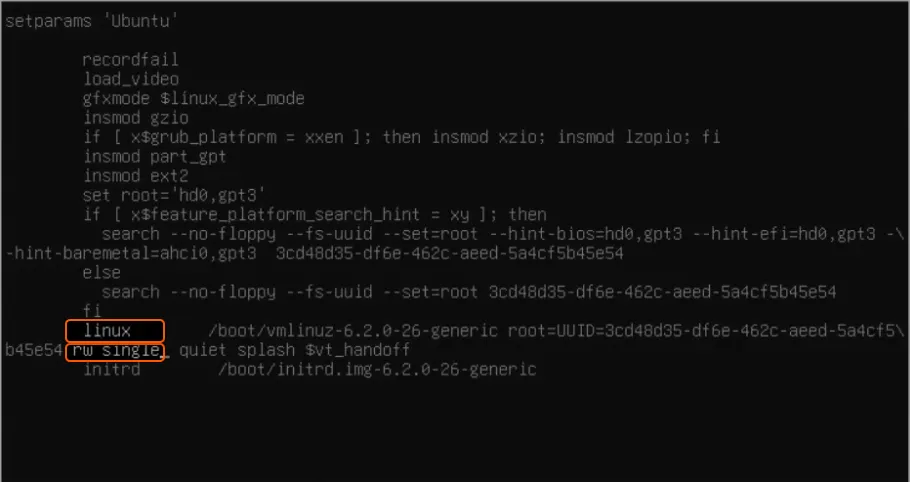Root password recovery
Resetting a Linux password can be crucial if you've forgotten it or need to access a system without the current user's credentials. There are two primary methods to accomplish this: through the GRUB bootloader or using a Live CD/USB. Here's a comprehensive guide on how to execute both procedures, ensuring you can regain access to your Linux system.
Via GRUB Bootloader
The GRUB (Grand Unified Bootloader) provides a way to regain access by booting into a special mode where you can reset a user's password.
-
Access GRUB Menu: Start or restart your computer. Immediately press the Shift (or Esc in some cases) key to open the GRUB menu.
-
Edit Boot Parameters: Navigate to the default boot entry using the arrow keys and press 'E' to edit it.

-
Boot into Single-User Mode: Look for the line beginning with linux or linux16. Change ro quiet to rw and append single or init=/bin/bash. Confirm and boot with these parameters by pressing Ctrl + X or F10.
-
Enable Write Permissions: To modify the password, the filesystem must be writable. Execute mount -n -o remount,rw /.
-
Change the Password: Use passwd
, substituting with the actual user's name. Follow the prompts to set a new password. -
Reboot the System: Ensure changes are written and reboot with sync followed by reboot -f.
Using a Live CD/USB
If the GRUB method is not an option, a Live CD/USB provides an alternative approach.
-
Boot from Live Media: Insert the Live CD/USB and select it as the boot device during startup.
-
Access a Terminal: In the live environment, open a terminal window.
-
Locate the Root Partition: Use sudo fdisk -l or sudo lsblk -f to find the partition that contains the Linux system.
-
Mount the Root Partition: Create a directory for mounting, e.g., sudo mkdir /mnt/myroot, and mount the partition (sudo mount /dev/sdXY /mnt/myroot).
-
Change Root Directory: Enter into your system's environment with sudo chroot /mnt/myroot.
-
Reset User Password: Use passwd
, replacing with the name of the user or root to change the root password. -
Cleanup: Exit the chroot environment with exit and unmount the partition with sudo umount /mnt/myroot.
-
Restart: Remove the Live media and reboot. You should now be able to log in with the new password.
By following these detailed steps, you can reset a Linux user's password using either the GRUB method for quick fixes or the Live CD/USB method for more complex situations or when GRUB access is restricted. Both approaches are effective for regaining access to your Linux system.